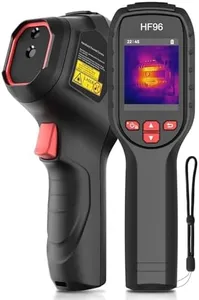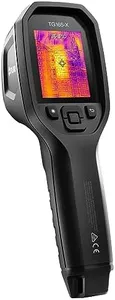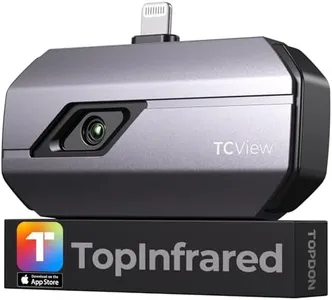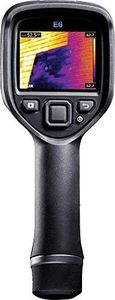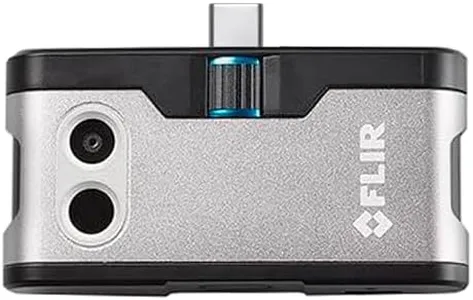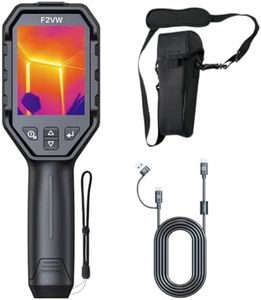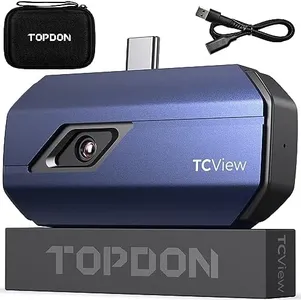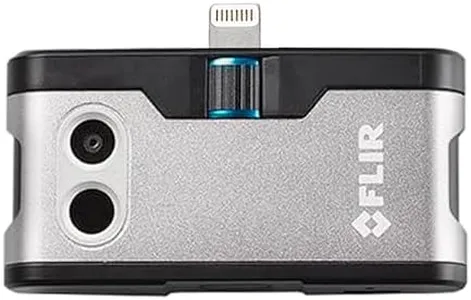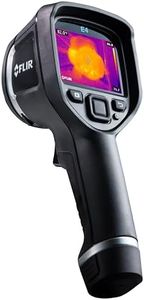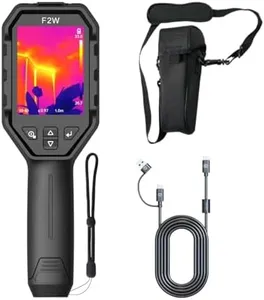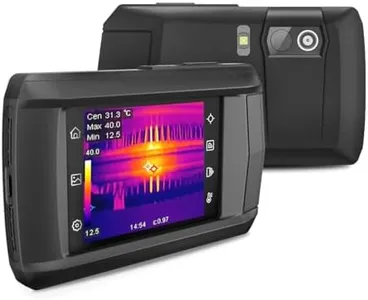10 Best Thermal Cameras 2025 in the United States
Our technology thoroughly searches through the online shopping world, reviewing hundreds of sites. We then process and analyze this information, updating in real-time to bring you the latest top-rated products. This way, you always get the best and most current options available.

Our Top Picks
Winner
HSFTOOLS HF96 Thermal Camera, Super Resolution 240 x 240, Thermal Imaging Camera with Laser Pointer, 96 x 96 IR Resolution, 25 HZ Infrared Camera,-4°F to 1022°F, 50°FOV, 8h Battery Life Thermal Imager
Most important from
371 reviews
The HSFTOOLS HF96 Thermal Camera offers a range of impressive features, making it suitable for various inspection scenarios. It boasts a super resolution enhancement from 96x96 to 240x240, which significantly improves image clarity, making it easier to identify issues. The thermal sensitivity of 50mk ensures that even small temperature differences are detected, and the device covers a wide temperature range from -4°F to 1022°F, making it versatile for different environments.
The 50° field of view provides broad coverage, and the 25Hz refresh rate allows for smooth viewing during inspections. Additionally, the built-in laser pointer and selectable color palettes enhance usability in different conditions. The USB Cast Screen feature is particularly useful for live-sharing detailed inspections with others. The HF96's durability is commendable, with an IP54 rating and the ability to withstand drops from up to 6.6 feet.
The battery life of up to 8 hours is sufficient for extended use, and its built-in memory can store around 30,000 images. However, it’s worth noting that while the super resolution enhancement is beneficial, the base resolution is still 96x96, which may not be adequate for the most demanding tasks. The device’s size and weight (1.43 pounds) should be considered for portability, and while the temperature accuracy is within ±2%, this might be a limitation for extremely precise measurements. The HF96 is a robust and reliable thermal camera with excellent features for general use but may fall short for high-precision professional requirements.
Most important from
371 reviews
FLIR TG165-X Thermal Imaging Camera with Bullseye Laser: Commercial Grade Infrared Camera for Building Inspection, HVAC and Electrical
Most important from
1296 reviews
The FLIR TG165-X Thermal Imaging Camera stands out in the thermal camera category, particularly for building inspections, HVAC applications, and electrical work. One of its main strengths is its high-resolution capability, offering a clear view with 48,000 pixels and an impressive temperature measurement range from -25°C to 300°C. This makes it versatile for various tasks, especially in diagnosing temperature-related issues efficiently.
The patented MSX technology enhances image clarity by overlaying visual details onto thermal images, helping users interpret results more easily. The inclusion of a laser pointer is a thoughtful addition, helping to identify the measurement area quickly, which can speed up inspections in busy environments.
Durability is another strong point; the TG165-X features a rugged design that is drop-tested and comes with an IP54 rating, assuring protection against dust and moisture. The warranty is also generous, covering parts and labor for two years and the detector for a full decade, providing peace of mind for users who rely on this equipment for professional work. However, some users might find the battery life somewhat limited for extended use, as it is battery-powered and may require recharging during long work sessions. Additionally, while the camera is user-friendly, those unfamiliar with thermal imaging technology may need a brief learning curve to fully utilize its features. The device’s price may also be a factor, as it is marketed towards professionals and may not be the most budget-friendly option for casual users or hobbyists. For those in the commercial sector looking for a reliable tool for thermal inspections, the TG165-X is a strong contender that combines performance with a robust build.
Most important from
1296 reviews
TOPDON TC002 Thermal Camera for iOS (iPhone & iPad), 512 x 384 Super Resolution, 256 x 192 IR High Resolution, Thermal Imager, Thermal Imaging Camera, -4°F~1022°F Temp Range, Support Video Recording
Most important from
651 reviews
The TOPDON TC002 Thermal Camera for iOS presents an impressive resolution of 512 x 384, which translates to clearer and more detailed thermal images for users. This is a significant improvement over standard resolutions, making it easier to identify temperature variations. With a thermal sensitivity of 40mK, it can detect minute changes in temperature, which is beneficial for detailed inspections.
The camera has an extensive temperature range of -4°F to 1022°F, allowing it to handle various environments and applications, from winter conditions to high-temperature industrial settings. Its 25Hz refresh rate ensures smooth temperature readings with minimal flickering, enhancing the user experience. Additionally, the TC002 features adjustable sharpness and contrast to further improve image clarity and detail, and its field of view is adequate for most inspection tasks.
The device is designed exclusively for iOS devices with a Lightning port, making it a plug-and-play option for iPhone and iPad users, though it is not compatible with Mac. Battery life is reliable, with the camera drawing low power, allowing it to work for 6-8 hours on a fully charged iPhone and 8-10 hours on a fully charged iPad. Durability and build quality are solid, with a compact design that makes it easy to carry and store. However, users with newer iPhone models (iPhone 15 and later) will need a different version, the TC002C. The camera also includes useful features like picture-in-picture mode, image rotation, and multiple color palettes, adding to its versatility. Suitable for various professionals, including home inspectors, HVAC technicians, electricians, and farmers, the TOPDON TC002 is a practical tool for precise temperature measurement and thermal imaging.
Most important from
651 reviews
Buying Guide for the Best Thermal Cameras
When choosing a thermal camera, it's important to understand the key specifications that will determine how well the camera meets your needs. Thermal cameras are used for a variety of applications, from building inspections and electrical maintenance to wildlife observation and security. Knowing what to look for in terms of resolution, sensitivity, temperature range, and other features will help you make an informed decision and select the best thermal camera for your specific requirements.FAQ
Most Popular Categories Right Now


